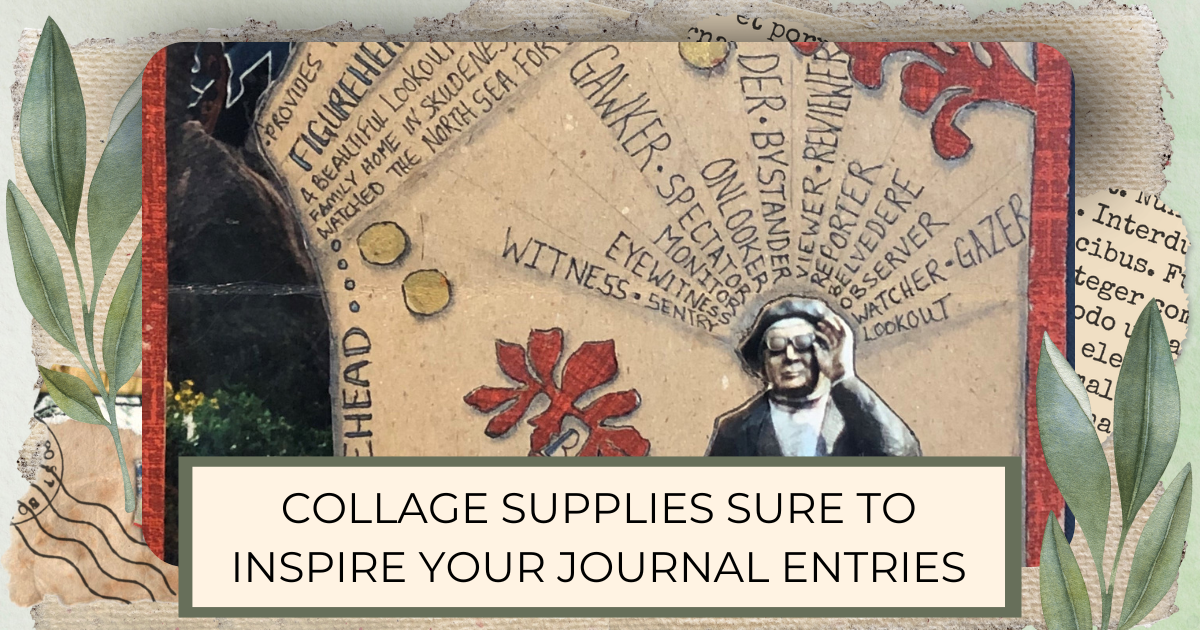
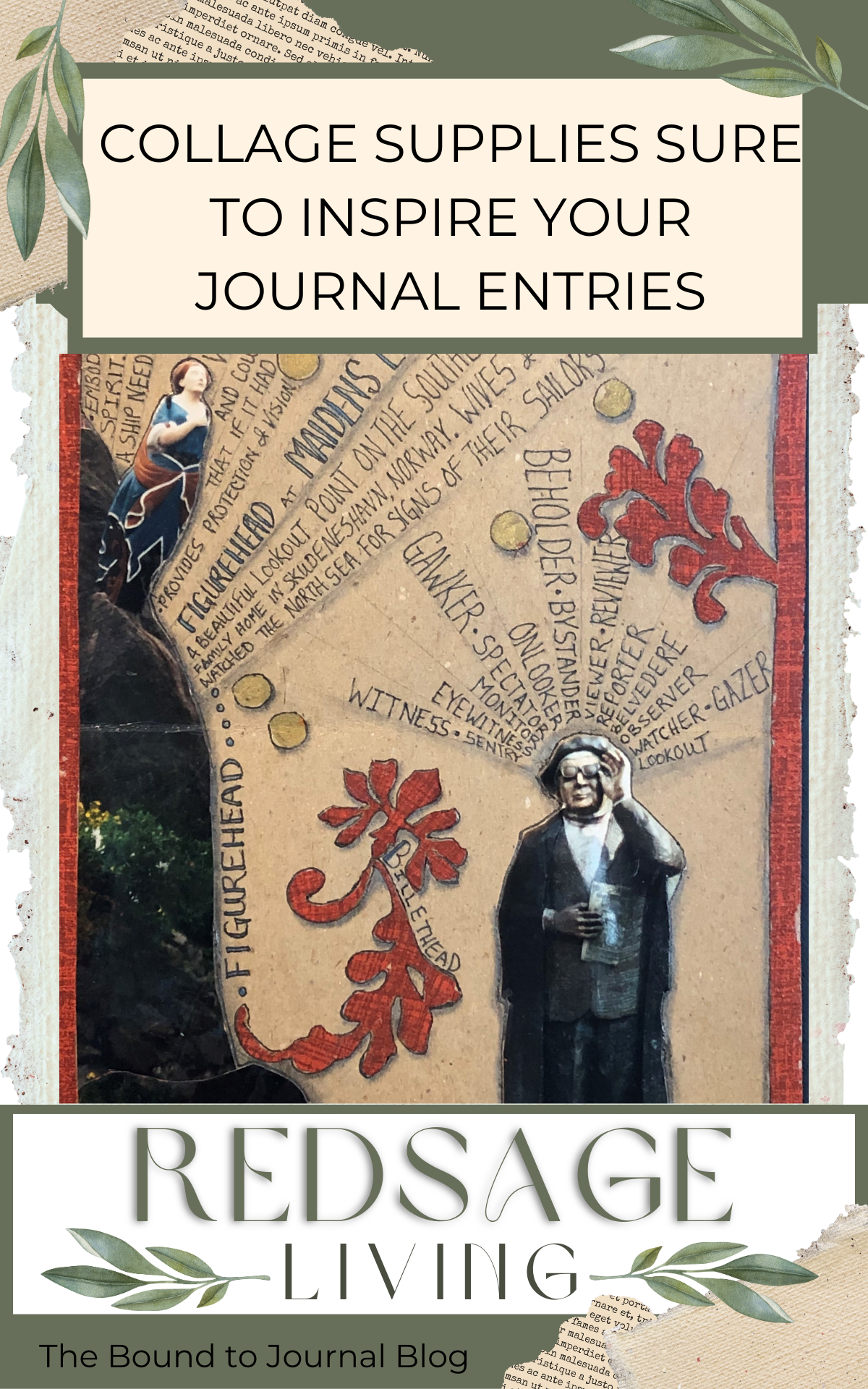
Have you ever combined collage with your journal entries?
If it's new to you, don't be intimidated. Collage is freeing and fun!
Because it's hard to make a mistake in collage, it's a perfect time to explore your supplies and rekindle your relationship with your inner artist while opening your journal to the possibilities waiting for you.
Collage for your journal is like playtime with surprising results.
If you gather enough ideas and fun supplies to collage several journal pages, then do it!
It’s not unusual to keep at least three pages going at the same time. This technique can be more productive, especially if you have a similar theme in mind. Plus, you'll avoid the pitfalls of overthinking each page.
Think, write, cut, imagine, and play ALL before you glue anything down! If you haven't already, take a minute to read our post, "Boost Your Journals by Adding Collage," for more inspiration before you begin gathering!
What should you gather?
This is an ongoing activity.
The lists we've provided below are fairly long but not comprehensive. If all you have is old masking tape, a pen, and a piece of paper, start journaling!
Get your journal ready. As you read the lists below, you'll start thinking of things you may already have or they may even trigger a few journaling entries, so get ready for the ideas to begin flooding in!
First: A few Important Don'ts:
- Don't run to the store with this list and start buying! The best thought provoking items are found, gathered, and collected for FREE!
- Don't wait to gathering collage items until after you have your journal page plan. Trust that the ideas will come organically.
- Don't wait to journal until you have your supplies, work with what you have.
Collaging journal pages has a flow to it. You add a little, you find a little, you may even set it aside for while, and then, you come back and add more. Remember that your goal is to let the collaging technique help or allow your ideas to surface. This isn't a marathon to slap things on a page and call it done. Your goal should be to let it help pull out your most important thoughts.

Suggested Tools:
- cutting mat or old magazines to cut on
- scissors (large areas, intricate and decorative) and Exacto knife
- ruler(s): Clear (so you can see where you are) and metal to help cut and tear paper
- toothpick: the point helps get under little areas with small amounts of glue
- bone folder: A clean popsicle stick works well, too. This is for clean folding or creasing
- awl: A heavy-duty sharp needle works as well
- paper punches: any shapes and sizes
- gluing applicator: this could be a flat tool, glue squeegee (old credit card or hotel key works great), or even a flat small paintbrush
- tweezers: handling and holding small pieces
- blending sticks, tortillions, or rolled tissue paper for smudging pencil marks for shadows and shading.
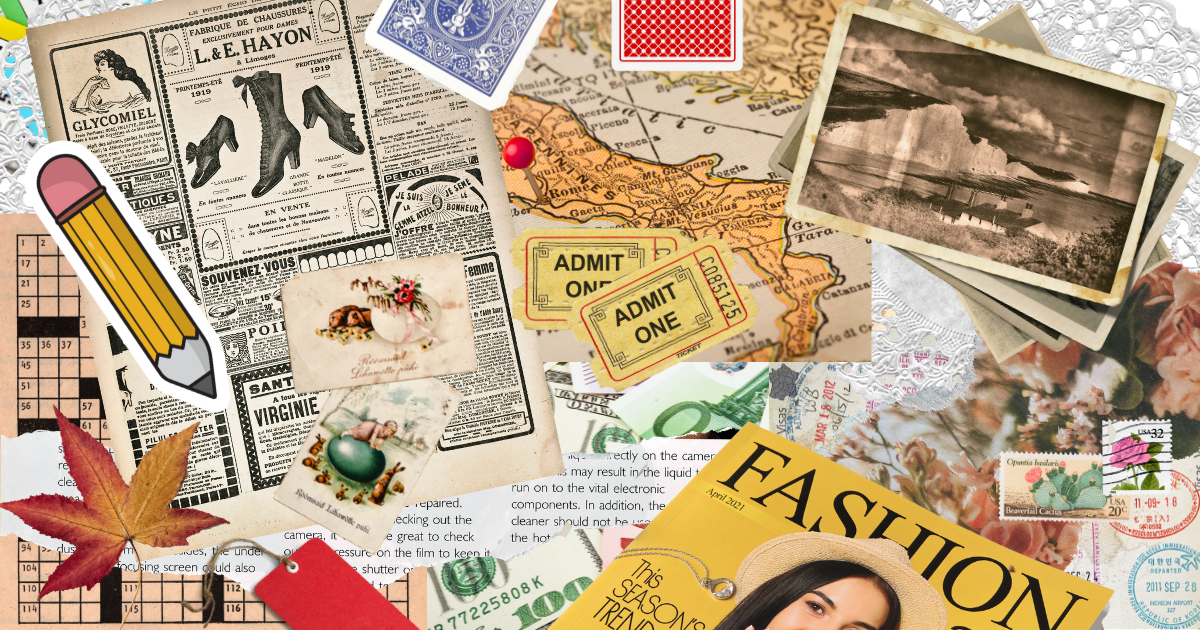
Ephemera:
Ephemera is a fun word for things that are used or enjoyed for only a short time and are primarily made of paper. They can be collectibles or paper so common they're typically discarded like an ice cream cone wrapper.
A few ephemera categories we collect are:
- ticket stubs, postage stamps (new or canceled), and stickers
- letters, postcards, greeting cards, and envelopes: with or without addresses, stamps, and cancelation marks. Handwriting is fun to include.
- magazines, newspapers, and brochures: local or foreign, comics,
- paper money (shredded and used foreign currency)
- doodles, sketches, watercolor remnants
- photos or photocopies of photos
- Old books: dictionaries, school books, picture
- origami, washi, wrapping, tissue, rice paper and decorative napkins, and unique paper scraps
- wrappers and tags from coins, cigars, candy, etc.
- specialty papers: graph paper, accounting paper, sheet music, tea bags, clothing pattern paper, product labels, coffee filters, paper doilies
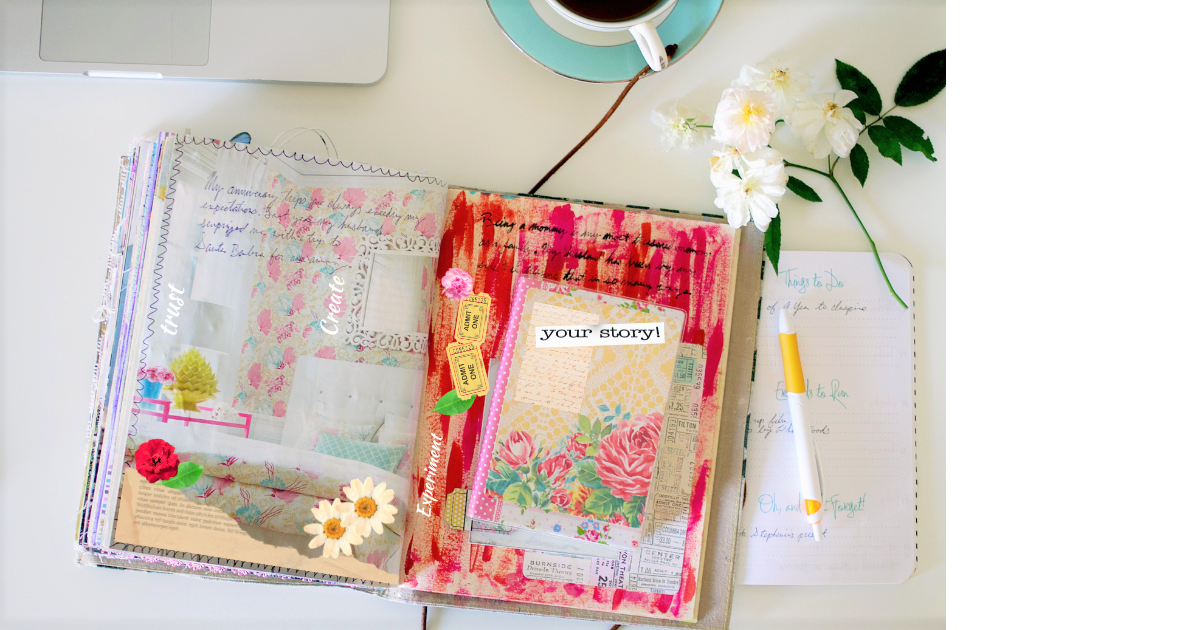
Miscellaneous Goodies:
For this journaling collage technique, stay with materials that are thin enough not to alter the fore-edge (opening side) of your journal. Any treasures you find that appear too thick should be saved in a spot specifically for future junk journal projects.
These are some of our miscellaneous favorites are:
- confetti, shredded paper strips,
- seeds, dried flowers, dried leaves, sand, and thin bark like a fine layer of birch
- fine string, decorative flat yarn or ribbon, or rick rack
- lightweight fabric, gauze, cheesecloth, doilies
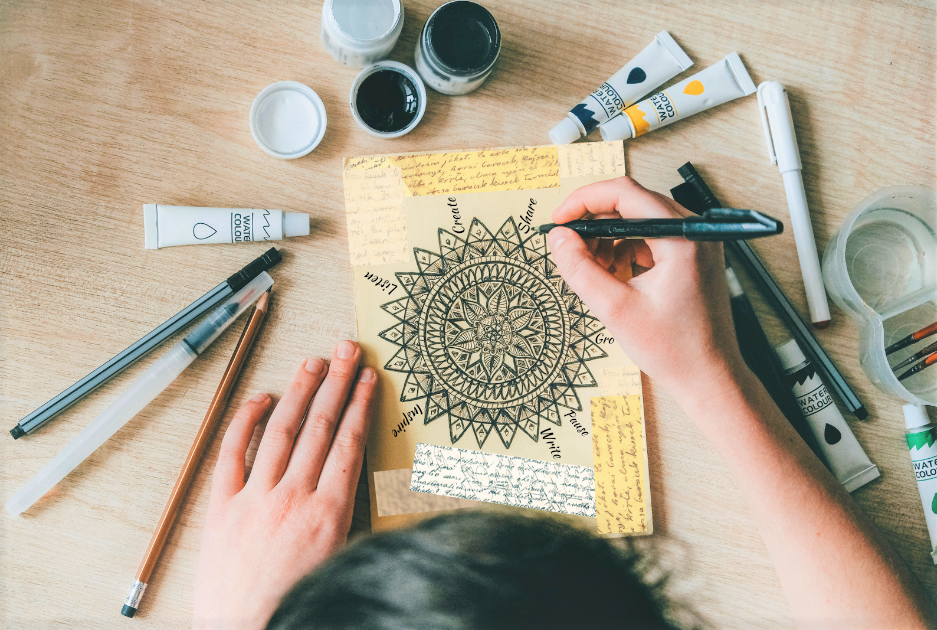
Options for attaching collage items:
- Tape: masking (plain or colored), clear, double stick, washi, bookbinding, linen, and/or packing
- Glue: *excess moisture will warp pages.
- PVA, Tackie™, rubber cement
- keep a glue squeegee (old credit card) handy to spread across your page)
- Modge Podge
- flour/water mix
- picture corners
- needle and thread: sewing spool thread, single-strand embroidery floss, specialty fine string
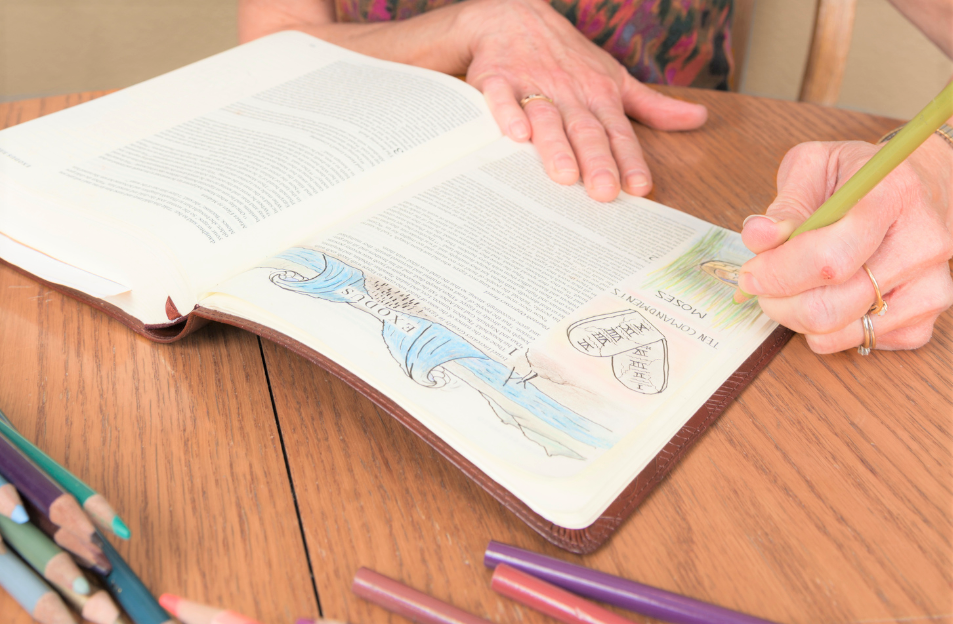
Writing and Colorful Accents:
Have you purchased any new supplies but haven't tested them out yet? Almost anything that makes a mark will work. Experiment & play. * Reminder: Excess moisture will warp pages so test papers help with experimenting.
These are a few of our favorites:
- Pencils, pens, Micro pens, and markers of different sizes and colors
- Paint: acrylic, watercolor: dry on dry for detail and less warping
- oil pastels, crayons, Craypas
- colored pencils: Crayola and Prismacolor are my favorites because they're waxier
- ink stamps and stamping ink
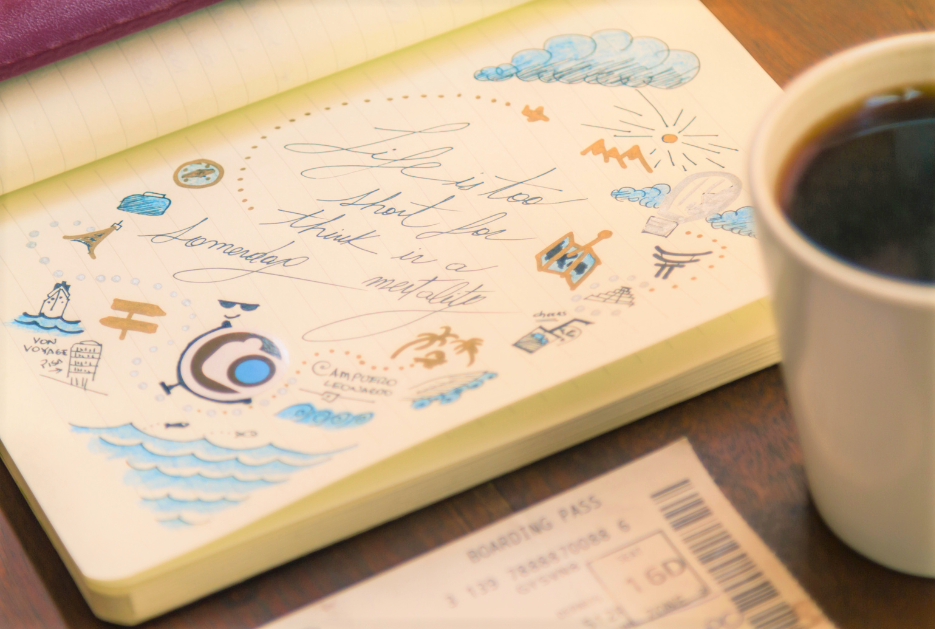
Organize, Sort, & Store:
Many of the special items you gather may not be used right away. Find fun options to store the items you've collected. Sort into themes. Label your storage to quickly access your treasures.
This is a perfect time to recycle envelopes or put an antique box to use.
Here are some of our storage ideas.
- envelopes: windowed or not, any size, recycled, plastic, made to fit
- file folders: You can leave these as is or tape one or two sides to form a pocket. Cut to size.
- stack-able paper storage drawers
- Boxes: recycled, photo, recipe (with or without dividers), and antique cigar or file boxes
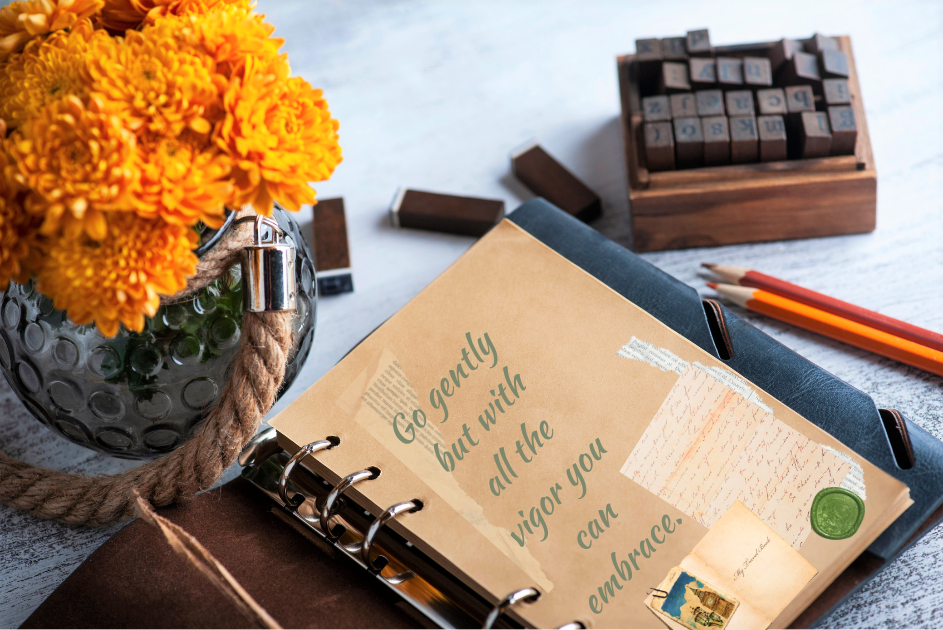
Tips for success:
- Keep your journal page as dry as possible. when using paint or glue. If you’re concerned but want to use a wet medium, consider creating a test sheet or making the collage on a separate page and attaching your final design to your journal.
- Try to leave the gluing for last whenever possible. This leaves flexibility to change positioning as your ideas develop. If you have to attach something, maybe just attach it with a small tack of glue.
- Markers like to bleed through paper. Protect your other journal pages or work surface with a piece of waxed paper or scrap paper.
Remember, with collage, your options for what you can use, how you attach them, what you write, and where you write it.
Collage is creatively therapeutic. Dive in and embrace the process. You're sure to find joy, inspiration, freedom, and a new energy for journaling.
Make sure to check out our post, "Boost Your Journals by Adding Collage," for more inspiration!
Want to know why we encourage you to nurture your creative side? Check out, "Creativity, Make It Your Priority." NOW!
As always, we’d love to hear from you. We want to know what worked for you and what was the spark that ignited your journal entry.
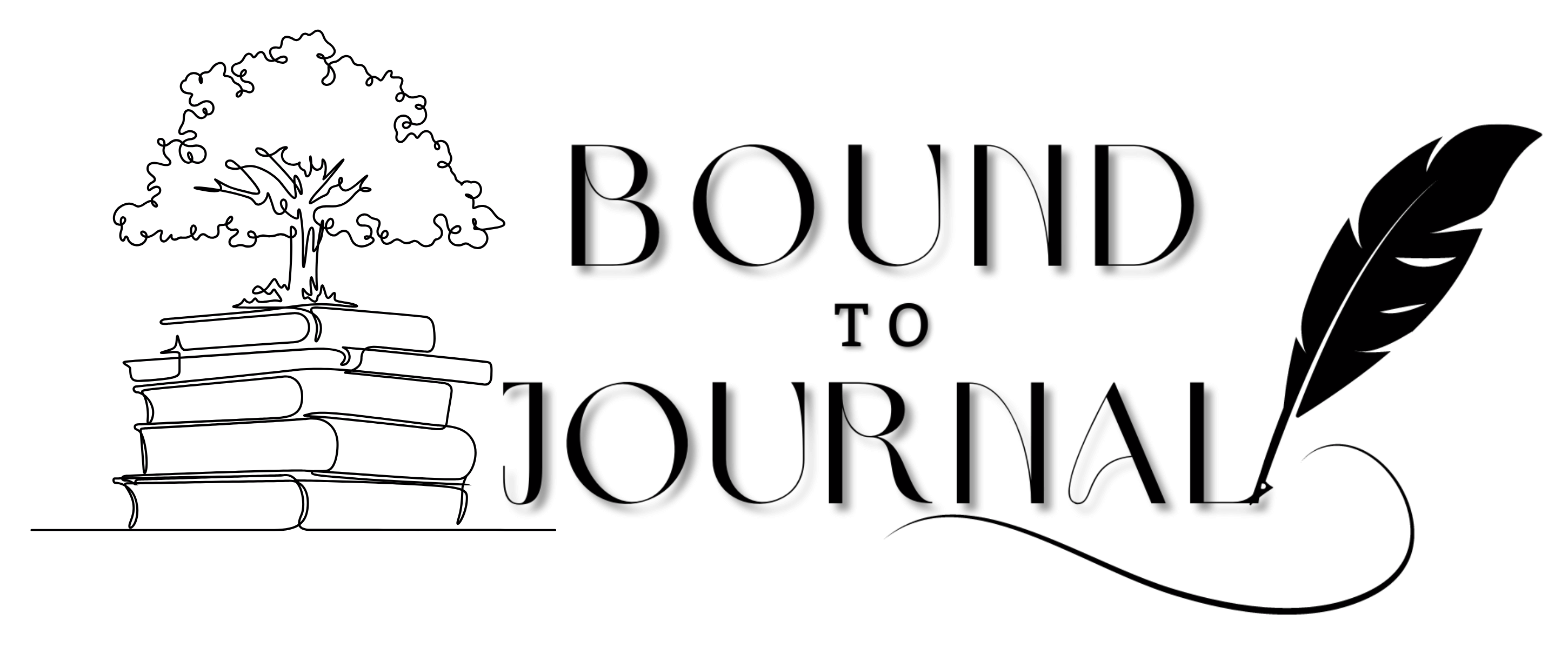

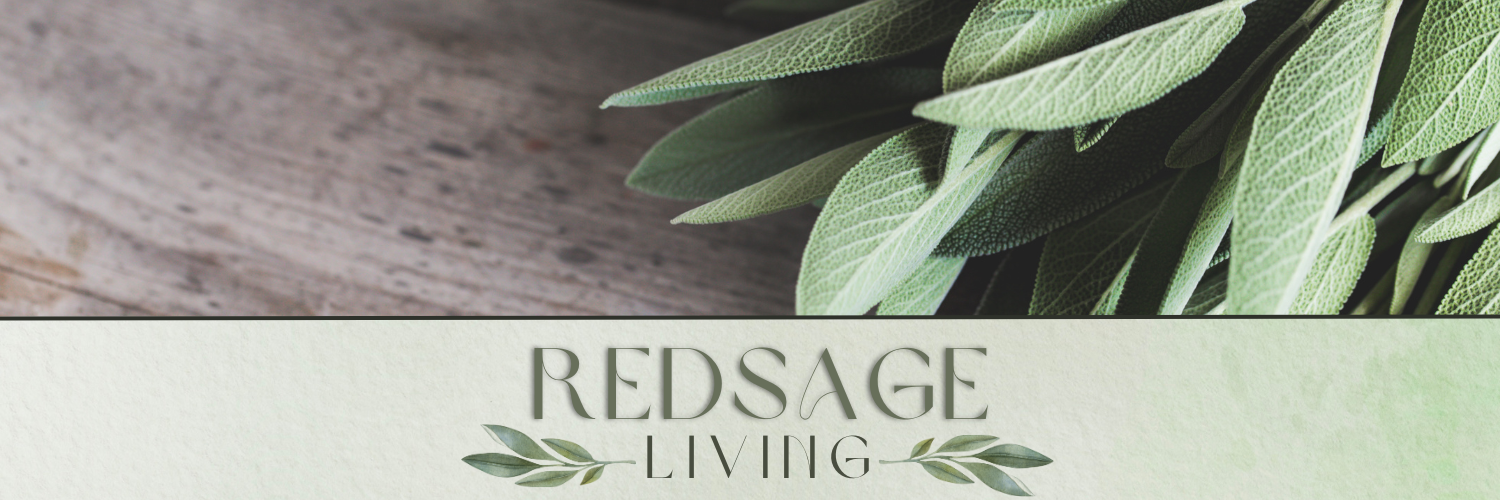
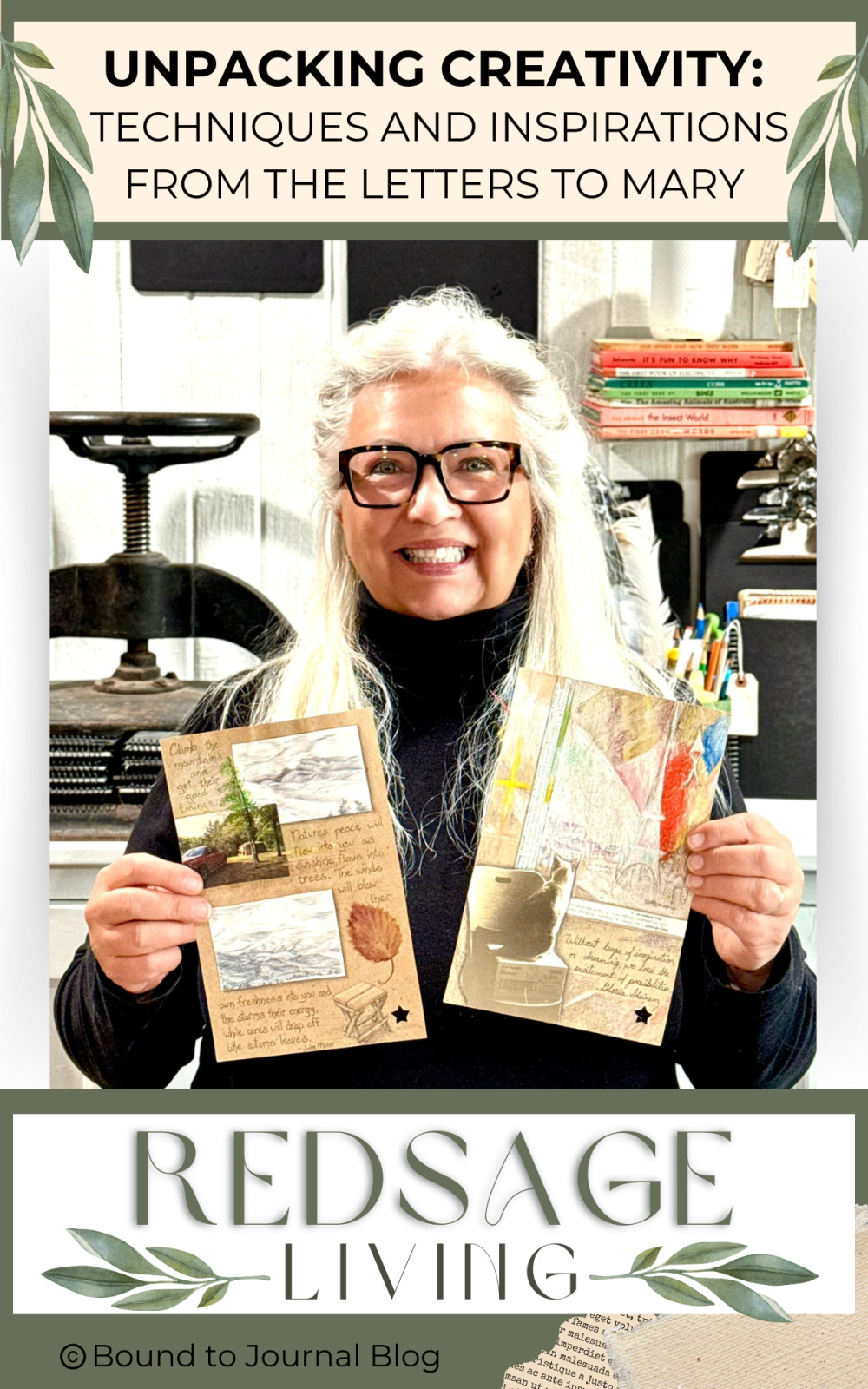







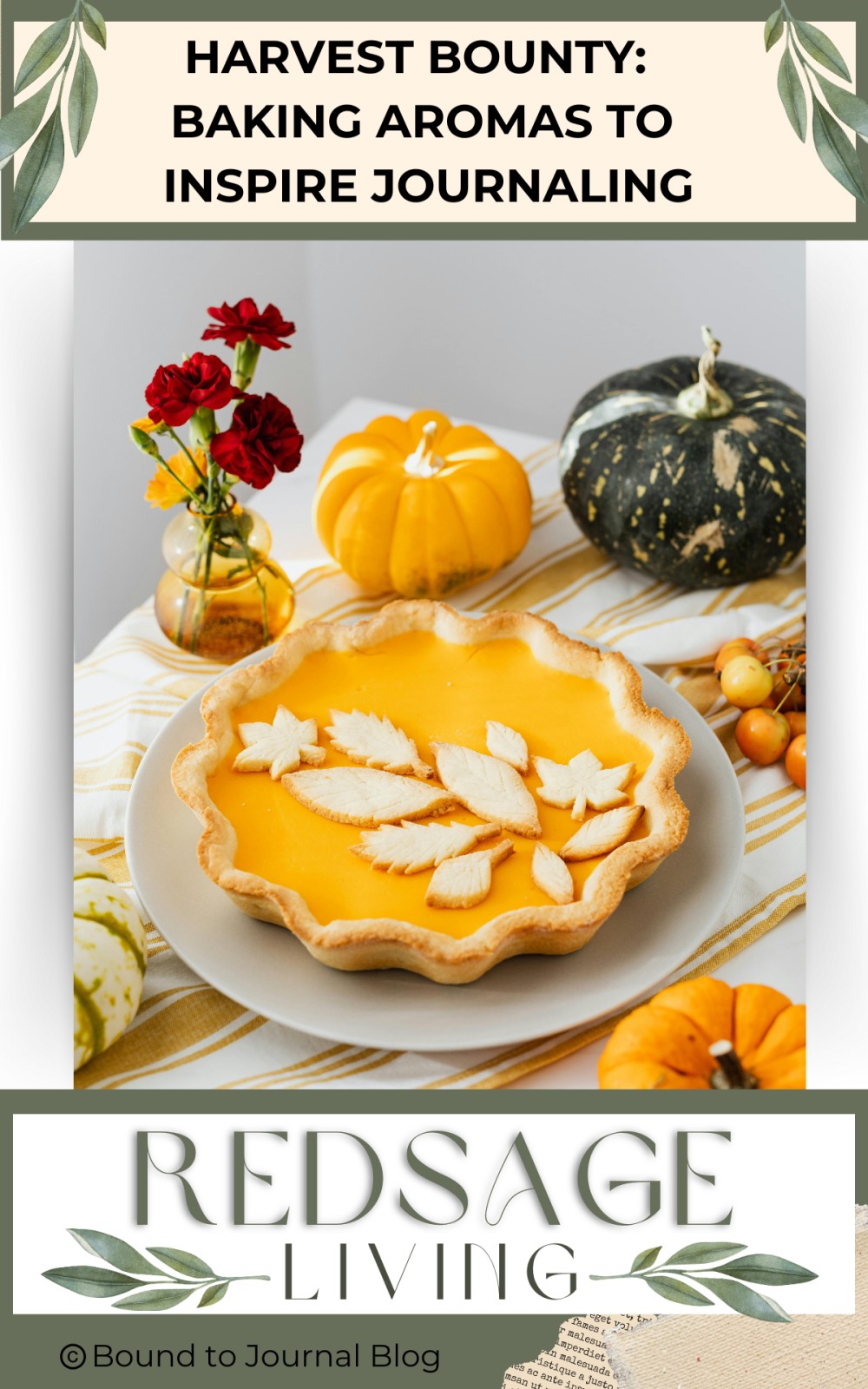
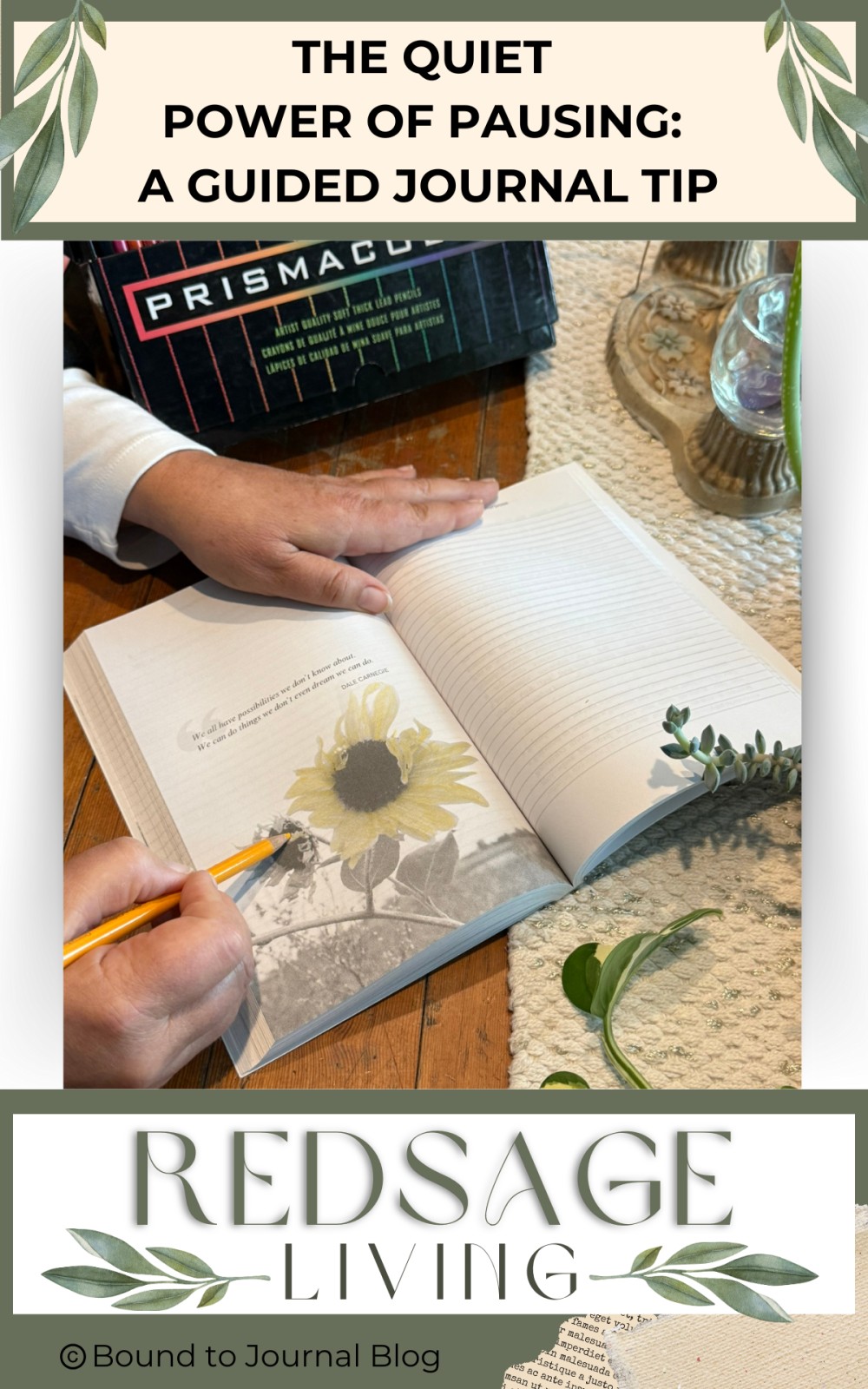
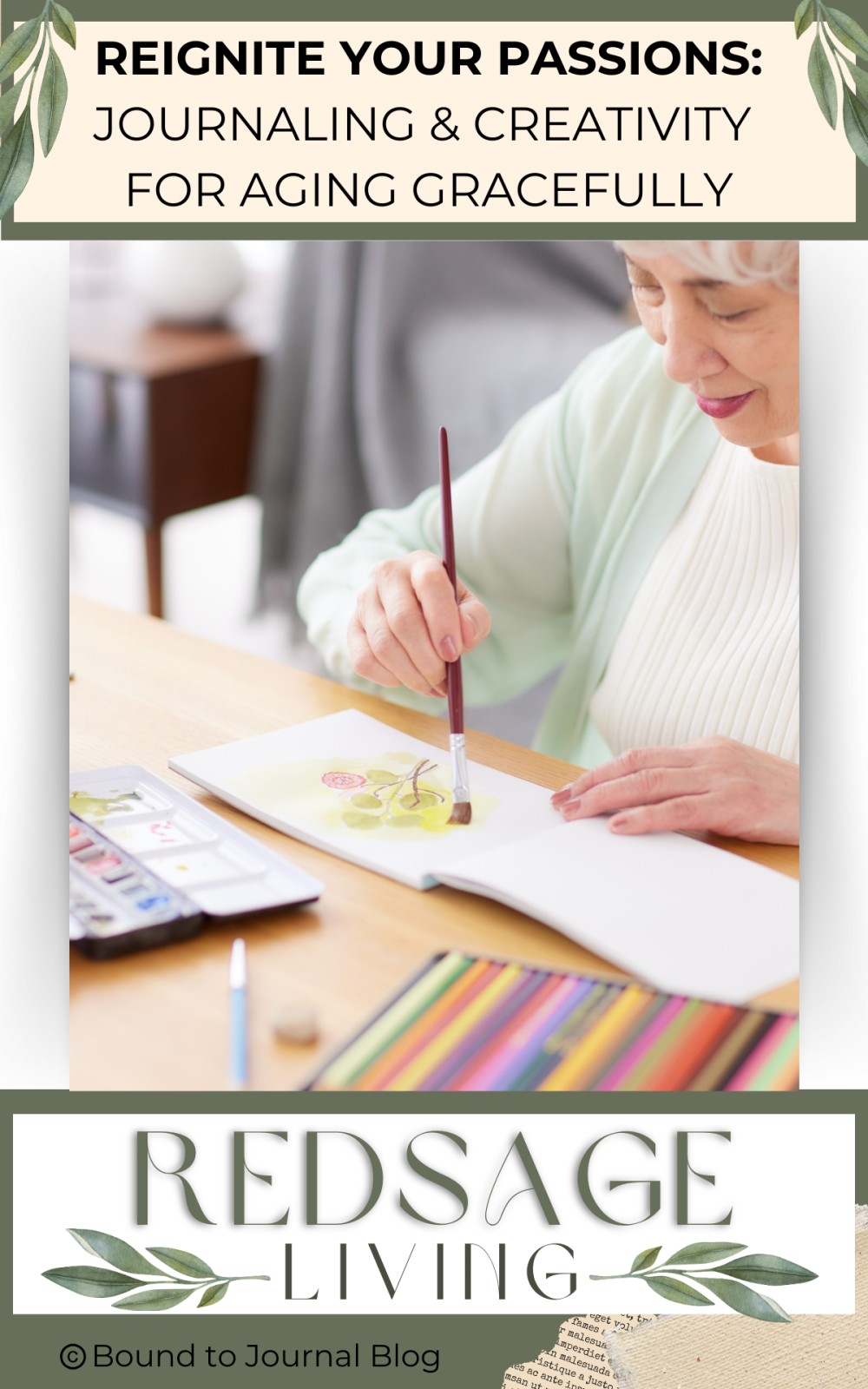


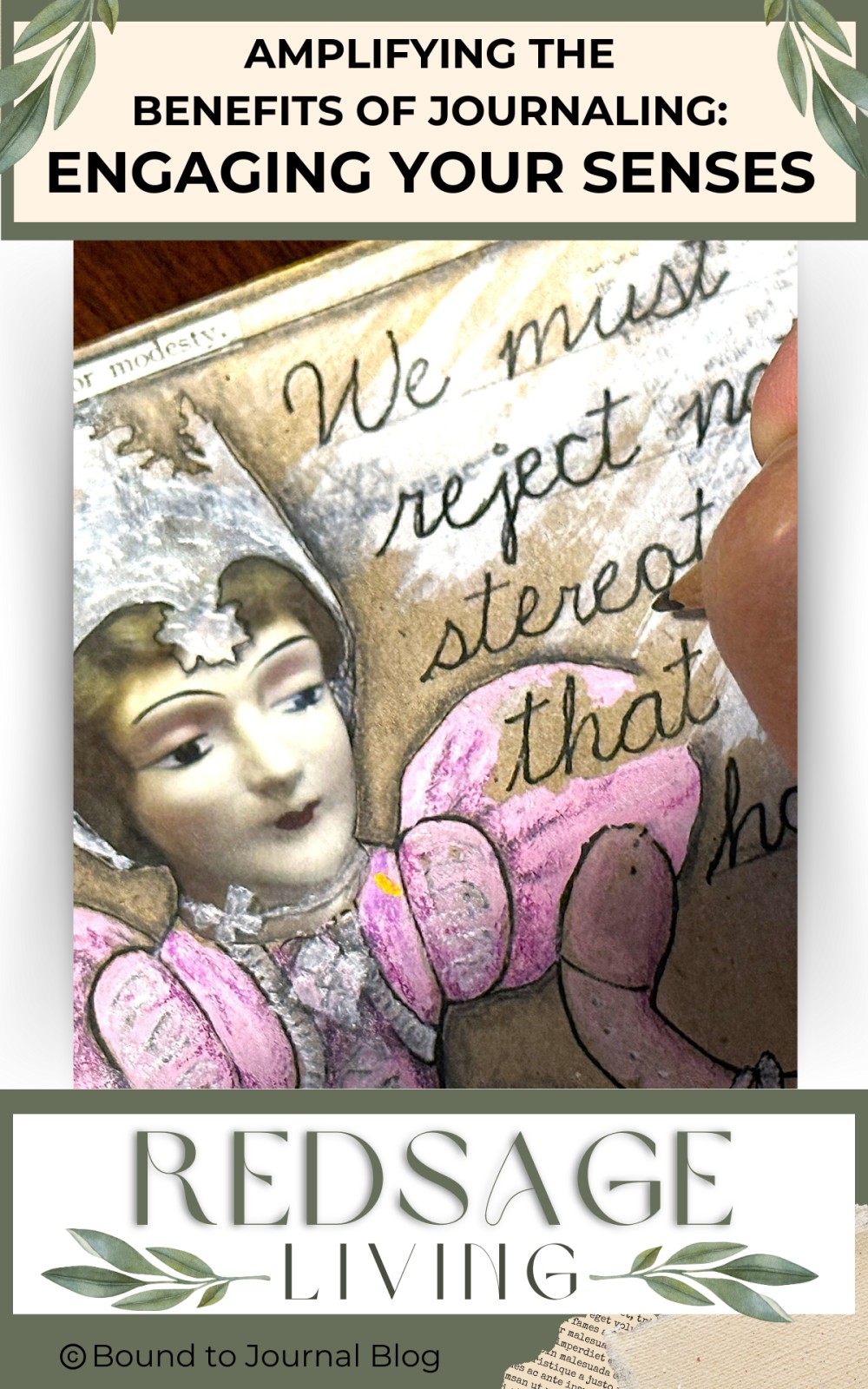

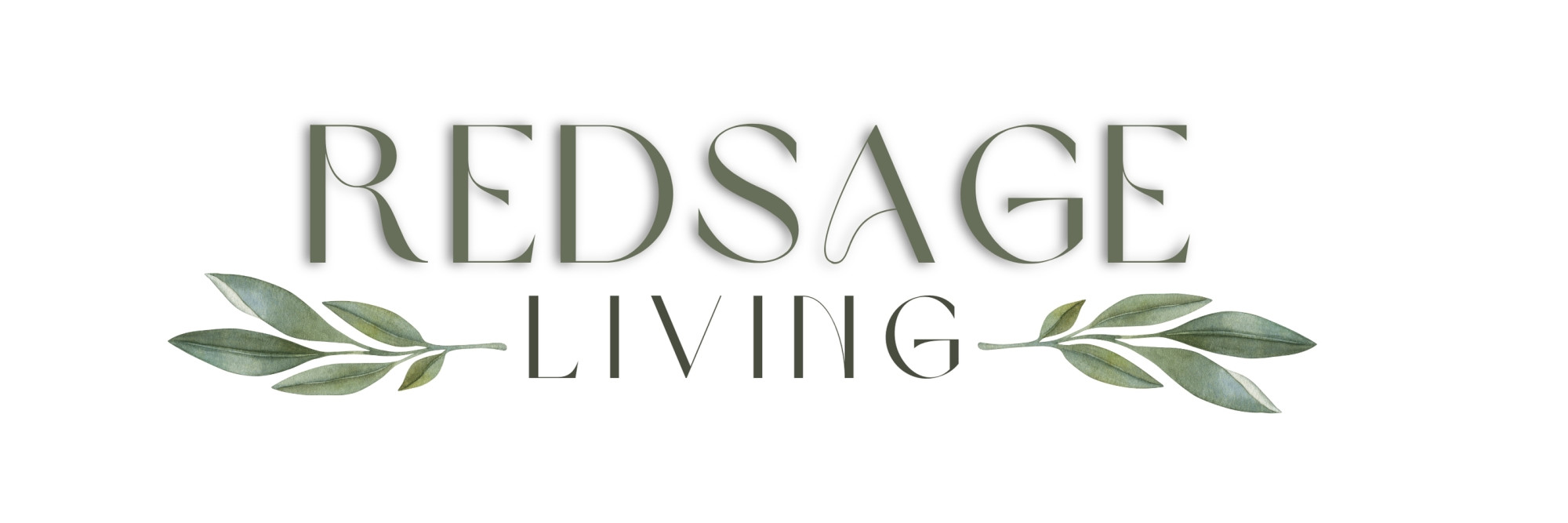

0 Comments